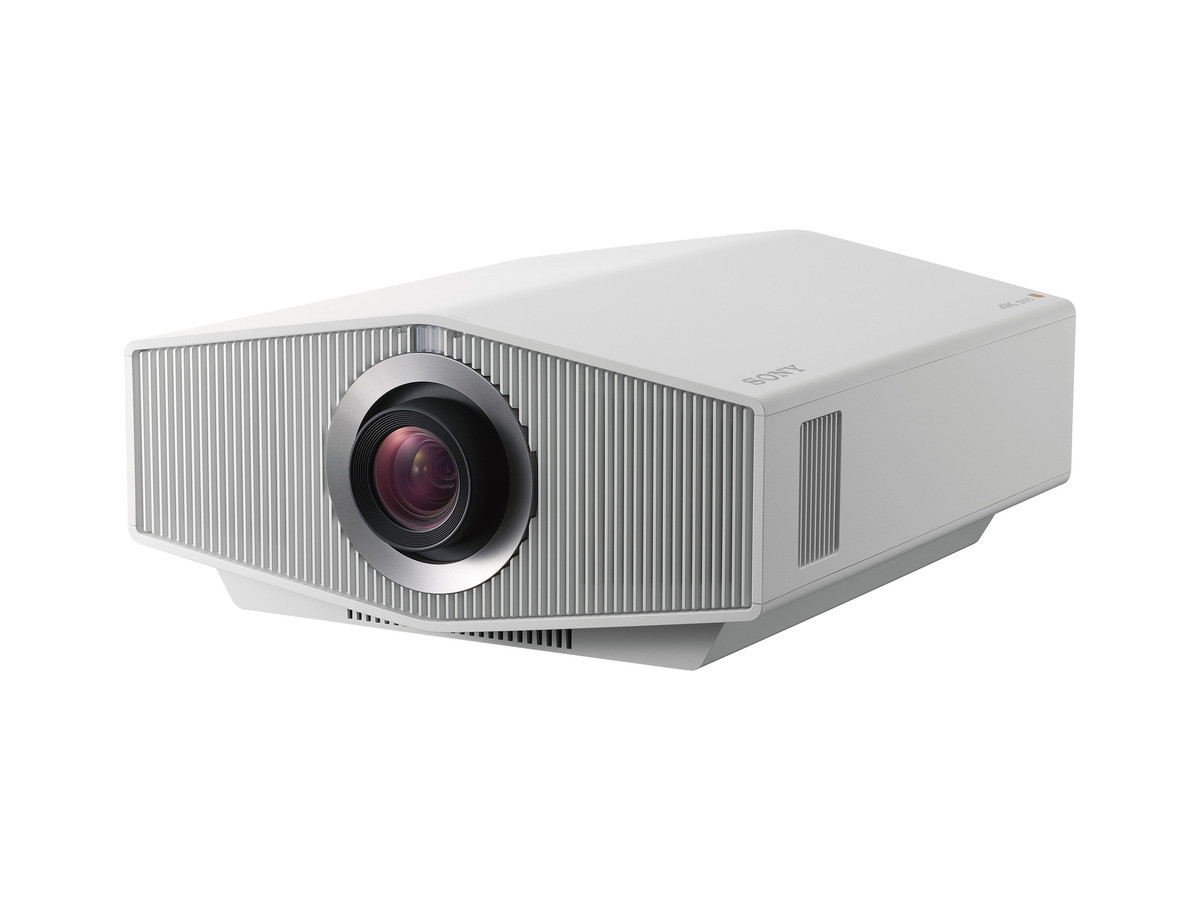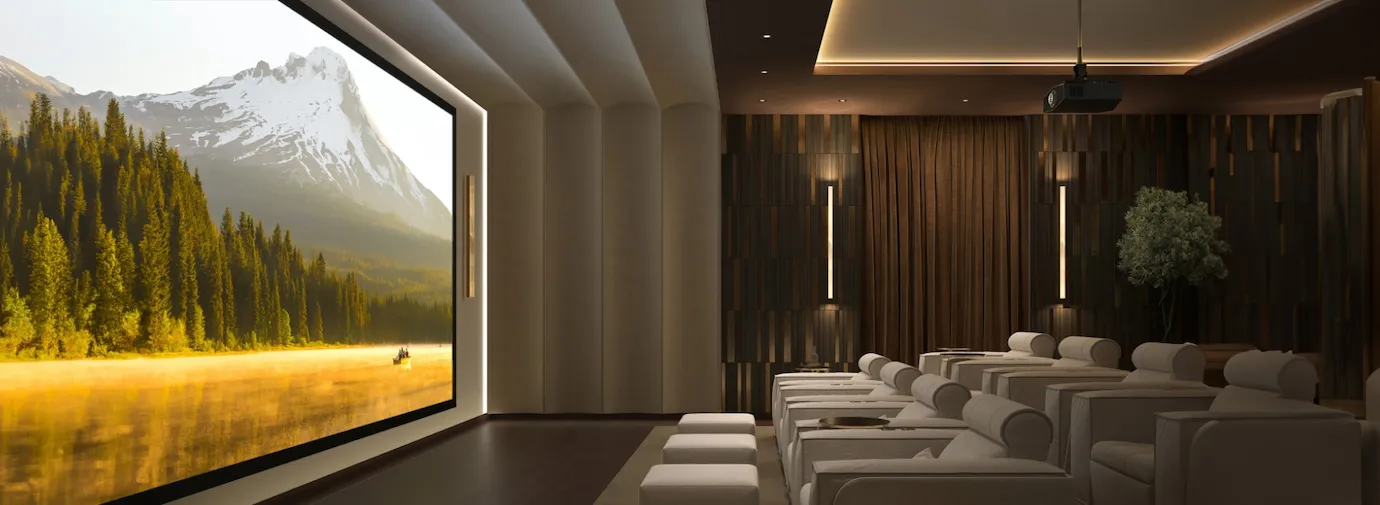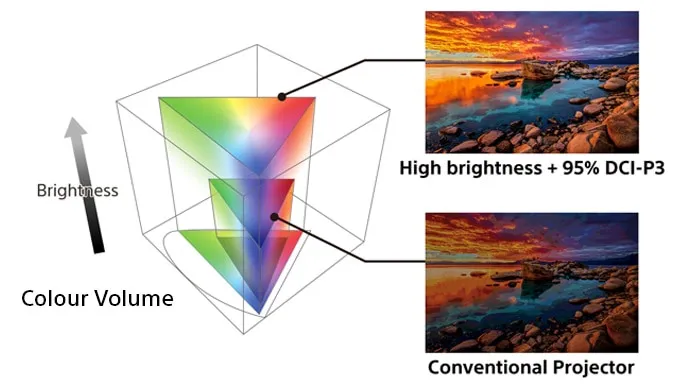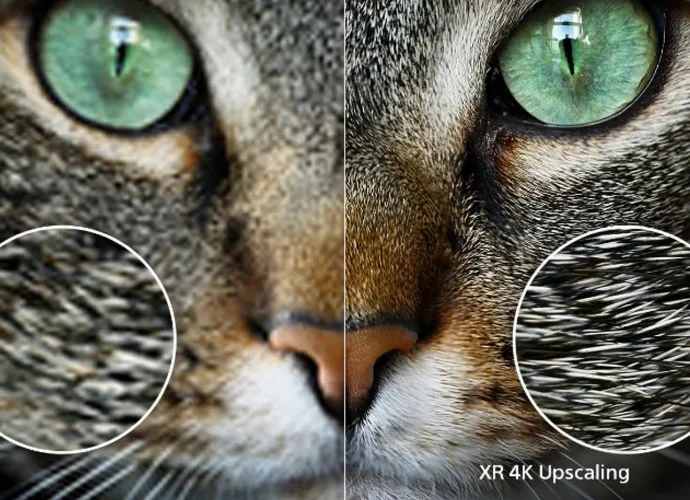























£15,709.72*
- Brightness 2,700 Lumen
- Resolution 3840 x 2160 4K UHD
- Aspect Ratio 16:9
- Operating noise 30 dB


Product information
The BRAVIA Projector 8 takes home entertainment to the next level, utilising Sony's cutting-edge image processing technologies that harness cognitive intelligence for the most realistic and emotive images yet.

Wide dynamic range with richer, more subtle gradations
The latest XR processor for projectors uses Sony's renowned BRAVIA TV technologies and advanced data processing to optimise individual objects on the screen in real time. You'll be rewarded with stunning 4K HDR images with a level of contrast and realism unattainable with previous home cinema projectors.
Dynamic XR tone mapping
Peak lighting performance is analysed frame by frame: Tone mapping ensures that direct sunlight and other bright highlights are faithfully reproduced, while fine details in dark shadow areas are preserved.

XR Deep Black
The laser dimming is precisely controlled in dark scenes, e.g. scenes with a night sky. Scenes with night skies, and provides deeper, richer blacks while maintaining colour and tonal accuracy.

Billions of vibrant, beautiful colours
The high brightness is combined with XR Triluminos Pro technology to achieve coverage of over 95% of the DCI-P3 colour space. Thanks to the faithful reproduction of over one billion colours, even the finest variations in saturation and hue are visible.
XR Triluminos Pro
XR Triluminos Pro displays over one billion colours. With all this, combined with high brightness, you can expand the colour volume and fine details.

Large colour gamut and high brightness
All this, in combination with high brightness and extended colour volume, ensures excellent colour reproduction.

Achieve ultimate clarity
XR Clear Image Processing analyses individual objects frame by frame, upscales all your favourite content to a resolution of almost 4K and minimises image noise. The results are so lifelike it's almost unreal!

Individually clear
Cross-analysis of the images ensures that the optimum processing is applied to individual objects at the highest resolution in each scene, resulting in incredibly natural textures.

Intelligent upscaling
Images with a lower resolution are upscaled to almost 4K. This is based on an extensive database for pattern comparisons, which intelligently reconstructs lost textures and details.

More beauty, less noise
Thanks to the powerful processing with XR Clear Image, image noise is minimised through zoning and dynamic frame analysis.
Brilliant images thanks to innovative technology
The combination of the brightness of the powerful laser light source with the groundbreaking XR processor for projectors ensures a unique, immersive home cinema experience in native 4K HDR quality.
Razor-sharp with the Advanced Crisp-Focused (ACF) lens
Advanced Crisp-Focus lens features a 70mm aspherical lens element that enlarges the focus area to deliver crystal-clear images across the entire screen area. The mechanical focusing system uses two moving lens groups and ED (extra-low dispersion) glass for distortion-free images with precise colour reproduction.

Smooth, responsive gameplay
Experience even more gaming fun on the big screen with the latest fast-paced titles. Everything is super smooth, flexible and responsive, giving you the competitive edge when split-second reactions matter
Technical data
| Name | Sony Bravia 8 VPL-XW6100/W Projector, 3840 x 2160 4K UHD, 2700 Lumen |
|---|---|
| Article number | 1000033065 |
| GTIN/EAN | 4548736165816 |
| Manufacturer SKU | VPL-XW6100/W/DE |
| Lens included | Yes |
| Model name | Bravia 8 |
| Projection Distance | Long Throw |
| Brand | Sony |
| Product Type | Projector |
| Product Series | Bravia 8 |
| Application | High-End Home cinema projector |
| Projector Type | SXRD |
| Projector lamp type | Laser |
| ANSI Lumen | 2,700 ANSI Lumen |
| Resolution | 3840 x 2160 4K UHD |
| Aspect Ratio | 16:9 |
| Contrast Ratio | 1,000,000 :1 |
| Operating noise | 30 dB |
| Operating noise - ECO | 26 dB |
| Lamp life | 20,000 Hour |
| Minimum Projection Distance | 180 cm |
| Maximum Projection Distance | 1,300 cm |
| Minimum Projection Ratio | 1.35 |
| Maximum Projection Ratio | 2.84 |
| Minimum Lens-Shift Horizontal | -36% |
| Maximum Lens-Shift Horizontal | 36% |
| Minimum Lens-Shift Vertical | -85% |
| Maximum Lens-Shift Vertical | 85% |
| Inputs | 1x Ethernet , 1x RS232 , 1x USB-A , 2x HDMI |
| Features | HDR10 , HLG |
| Product width | 46 cm |
| Product height | 21 cm |
| Product depth | 51.7 cm |
| Weight | 14 kg |
| Colour | White |
| Delivery contents | Batteries , Lens cap , Power cable , Remote control |
| Condition | New |
| Warranty | 24 Month |
| Warranty type | Bringin service Service and support information |
Downloads
Projection distance calculator
Contact our experts for help!
Image size:
Format
Format
Product safety
| Person responsible for the EU |
|---|
| Sony Europe B.V. |
| Kemperplatz 1 |
| 10785 Berlin |
| Germany |
| info@sony.de |



